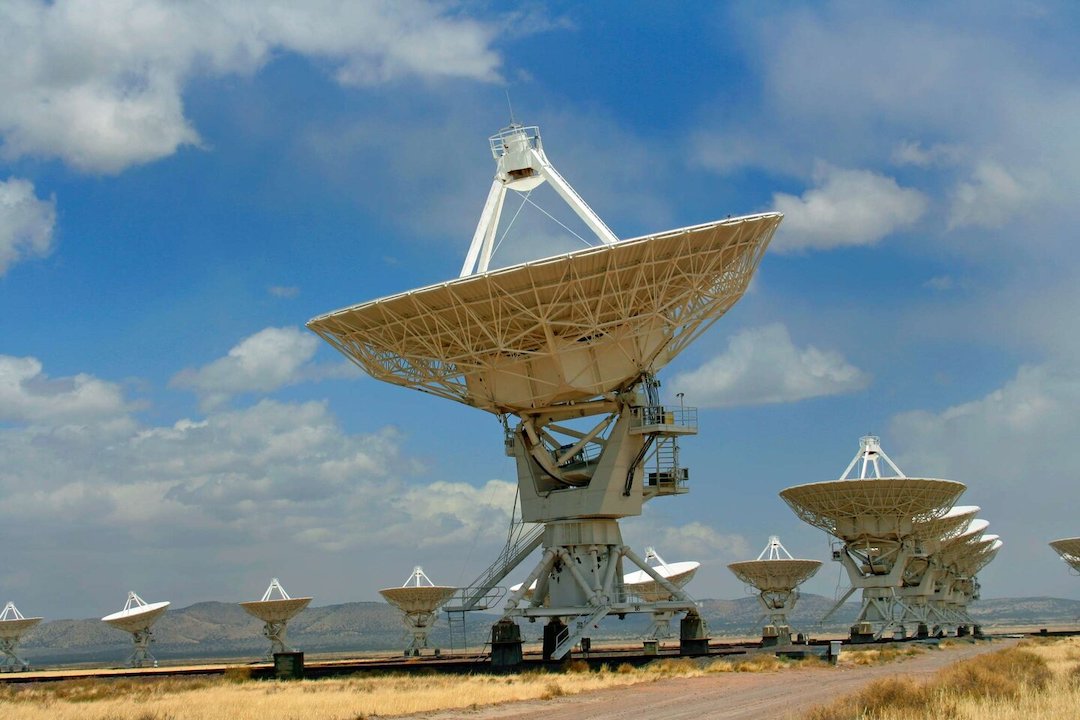Create a free profile to get unlimited access to exclusive videos, sweepstakes, and more!
Astronomers discover 157-day pattern in mysterious signal from space

An international team of astronomers has discovered a 157-day cyclical pattern in a mysterious radio burst from space, which could help narrow down the origin of these strange signals.
In a paper published in Monthly Notices of the Royal Astronomical Society, the team, led by researchers at the Jodrell Bank Observatory at the University of Manchester, revealed the results of a four-year study of FRB (Fast Radio Burst) 121102, which is only the second repeating FRB ever discovered. Through observing 121102 and comparing their observations with previously collected data, the team determined that the FRB repeats radio bursts for a period of 90 days before falling silent for 67 more days, creating a 157-day cycle that picked up again earlier this month.
"This is an exciting result as it is only the second system where we believe we see this modulation in burst activity," Dr. Kaustubh Rajwade of the University of Manchester said. "Detecting a periodicity provides an important constraint on the origin of the bursts and the activity cycles could argue against a precessing neutron star."
The discovery of 121102's 157-day repeating pattern marks only the second time astronomers have observed such a cycle in an FRB. The first, in FRB 180916.J10158+56, showed only a 16-day pattern, which shows just how little science still knows about the origin of FRBs and why they seem to vary so much.
"This exciting discovery highlights how little we know about the origin of FRBs," Duncan Lorimer, associate dean for research at West Virginia University, said. "Further observations of a larger number of FRBs will be needed in order to obtain a clearer picture about these periodic sources and elucidate their origin."
The study of FRBs is a fairly recent development in astronomy. The strange signals — powerful bursts of radio waves that last only milliseconds — were only discovered a little more than a decade ago, and at first they were thought to be one-off phenomena. Then came FRB 121102, which was observed to repeat its burst in 2016. Even after repeating FRBs were discovered, though, it took even longer for astronomers to recognize patterns in FRBs, and those discoveries are also still quite new.
So, what are FRBs? Well, the variations in the duration of the signals — as well as observations of both repeating and seemingly non-repeating bursts — suggest there could be more than one source for them. As Dr. Rajwade noted, the pattern of FRB 121102 could suggest that it's not a precessing (meaning a star with a wobbling axis) neutron star, but that doesn't mean other astronomical bodies are ruled out. As Science Alert notes, the possible explanations for the signals range from black holes to magnetars to pulsars and more. That said, even if you still want to believe, it's rather unlikely that the signals are coming from alien life forms.
In short, there's still a great deal we don't know about what causes FRBs, and it may take many more studies for astronomers to pin down the source. In discovering this rather lengthy pattern in FRB 121102, though, they've gotten closer to solving the mystery.


























